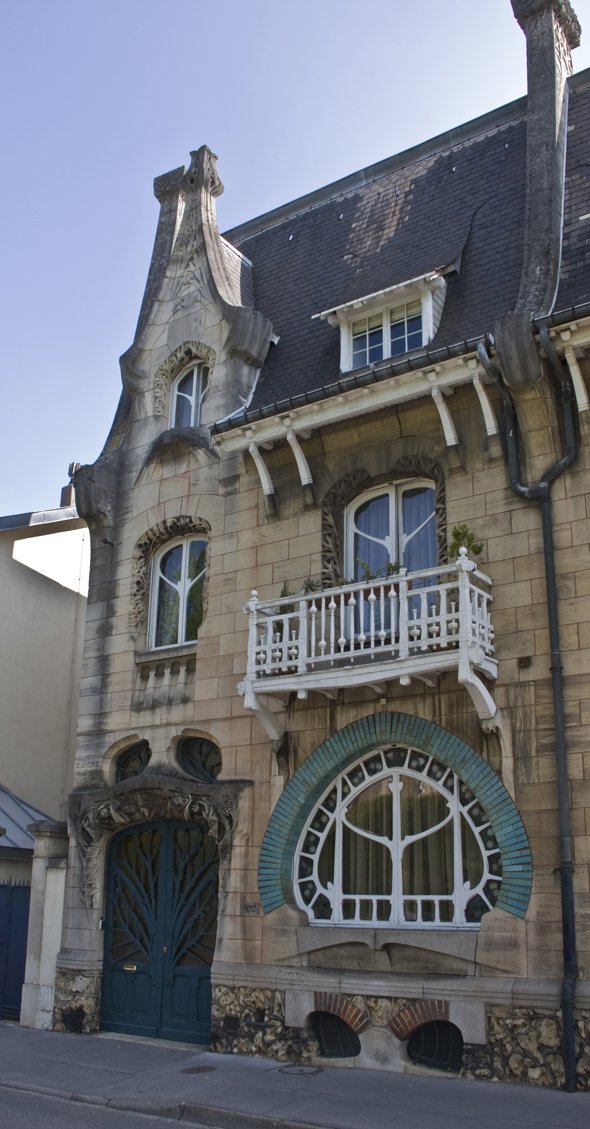#4583. Exquisite Art Nouveau façade with characteristic curvilinear forms and turquoise accents
Before us stands an exquisite example of Art Nouveau architecture, characteristic of the early 20th century. The façade exhibits the flowing, organic lines and asymmetrical composition typical of this style. Particularly expressive are the curvilinear window frames, the most notable being the large semi-circular window on the ground floor with its turquoise border and elegant white muntins.
The façade is constructed from light sandy-colored stone, creating a striking contrast with the dark slate roof. Decorative elements are rich in detail: an elegant white balcony with delicate balusters, a projecting bay window crowned with a cross-shaped element, and an artistically designed main entrance with double turquoise doors adorned with floral motifs.
The building's plinth is finished with textured stonework, creating an interesting contrast with the smooth surface of the main façade. Rainwater pipes are seamlessly integrated into the overall composition without disrupting the architectural integrity. The upper part of the façade features a decorative pediment with the characteristic flowing silhouette of Art Nouveau, emphasizing the vertical rhythm of the building.
Overall, the building represents a magnificent example of how Art Nouveau architects sought to create comprehensive works of art, where each detail is subordinated to a unified artistic vision, and functionality harmonizes with the aesthetics of natural forms.
